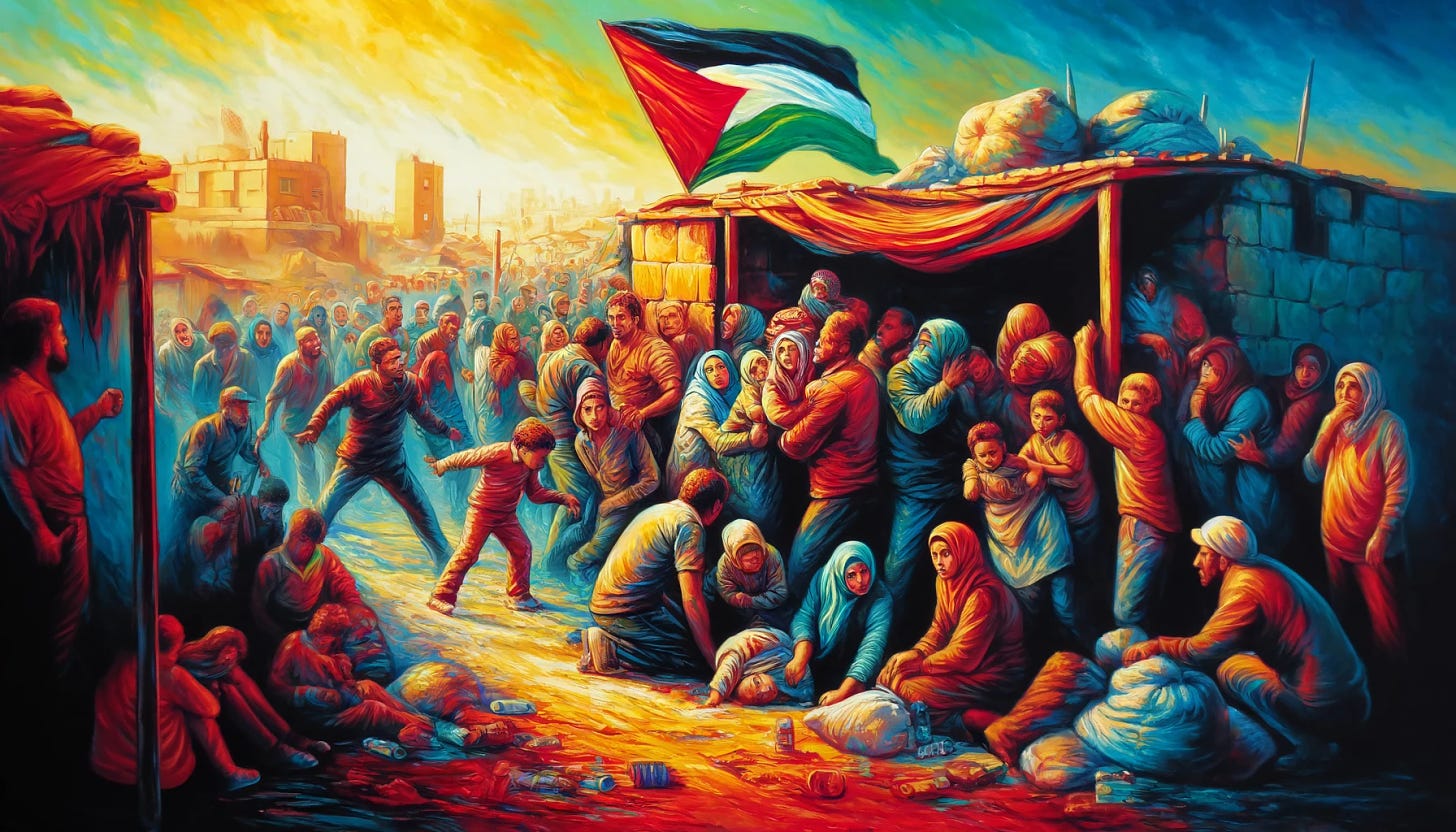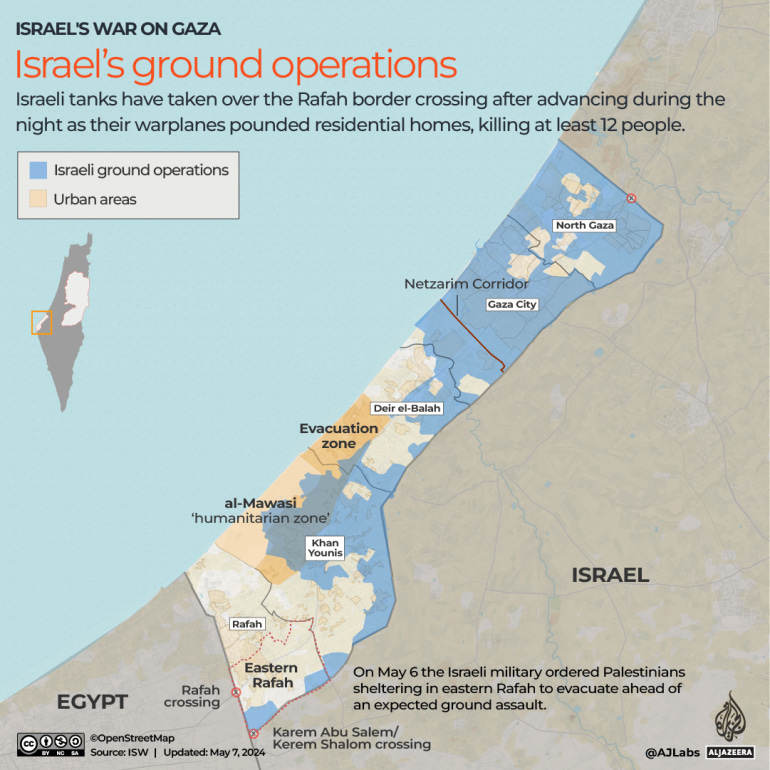Rafah Crisis in Gaza: On Verge of Catastrophe
Historical Roots of the Conflict and the Latest Escalation in Rafah
The latest escalation in Rafah reflects the deep historical roots of the Israeli-Palestinian conflict, particularly as it plays out in Gaza. The region has long been a focal point of religious, territorial, and political tensions. Following Israel's establishment in 1948 and subsequent wars, the Gaza Strip became one of the primary centres of Palestinian resistance. Hamas, which took control of Gaza in 2007, has since represented Palestinian interests in the enclave and frequently clashes with Israel. This longstanding enmity between Hamas and Israel has resulted in multiple armed conflicts over the years, causing significant loss of life and infrastructure damage.
Current Situation in Rafah
The latest escalation between Hamas and Israel has brought Rafah, a city at the southern tip of Gaza, into sharp focus. Israeli forces have seized the Rafah border crossing, a vital entry point for humanitarian aid into Gaza, thereby cutting off essential supplies and increasing the risk of a humanitarian catastrophe. Additionally, Israel's evacuation orders in eastern Rafah hint at a ground offensive targeting Hamas militants. Meanwhile, airstrikes have killed scores of Palestinians, further aggravating the already desperate conditions for civilians. Despite Hamas accepting a ceasefire proposed by third-party mediators, Israel rejected the terms and sent a delegation to Cairo for further negotiations while military operations continue. The situation remains tense, with fears of a full-scale invasion leading to catastrophic civilian casualties.
UN's Virtual Redundancy
The UN has struggled to effectively manage the ongoing crisis. Despite its charter to prevent conflicts and protect civilians, the UN's influence has been compromised by internal disagreements and Security Council vetoes. This gridlock has reduced the UN's ability to broker peace or enforce resolutions, leaving local and regional stakeholders to fill the void. Calls for ceasefires and aid often go unheeded, highlighting the institution’s limited influence in today’s multi-faceted conflicts.
Third-Party Mediation through Qatar
In this power vacuum, Qatar has emerged as a pragmatic mediator. Its neutral stance and established diplomatic ties with Hamas and Israel position it as a credible broker for ceasefire talks. Working with Egypt and other intermediaries, Qatar has made substantial efforts to bring both parties to the negotiating table. However, the ceasefire proposal has met resistance from Israel, which seeks to dismantle Hamas’s military infrastructure entirely. This impasse reflects the challenge of reconciling the immediate need for humanitarian relief with the long-term strategic interests of both sides.
India's Possible Role
India, a non-aligned nation with significant diplomatic capital, holds unique leverage that could bolster Qatar's mediation. Its strategic ties with Israel and historical support for Palestinian rights allow it to advocate for a balanced solution that addresses security concerns and humanitarian needs. By engaging diplomatically, India, under the dynamic leadership of Prime Minister Modi, could assist in maintaining communication channels and building consensus for a prolonged ceasefire.
Summing Up: Navigating a Complex Path Forward
The precarious situation in Rafah underscores the need for immediate and sustained international intervention. While the UN remains ineffective in its current capacity, Qatar's mediation, bolstered by support from nations like India, could help forge a temporary ceasefire and ease humanitarian suffering. Achieving this requires overcoming mutual distrust and finding a delicate balance between military objectives and civilian safety. Though challenges remain, the collaborative efforts of regional and international stakeholders offer a cautiously optimistic path forward in preventing further escalation and addressing underlying grievances, with minimal further loss of valuable lives.






